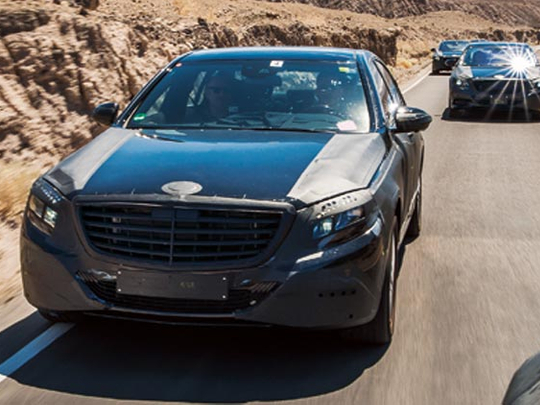
Pay special attention if you’re 10 years old; what you see here is not merely a car, it’s a device that allows you to peer into the future of automotive technology. This is what your Ford Fiesta will be able to do when you’re old enough to drive.
Every Mercedes-Benz S-Class, right from the day the first model rolled off the assembly line in 1959, has showcased world-first features that, in time, trickled down to the humble cars that the majority of us drive.
Anti-lock brakes, for example, were first debuted in 1978 in an S-Class. As were speed-sensitive power steering, passenger airbags, radar-guided cruise control, blind-spot assist and lane-keeping assist features, among several others. To look at an S-Class is akin to automotive clairvoyance.
Now, Mercedes has lifted the lid off some electronic wizardry that will be available in the 2013 iteration of its flagship, because radar-guided cruise control and lane-keeping assist are old hat these days, the highlight here is something called Distronic Plus with Steering Assist. While the currently available systems can maintain a preset distance from the vehicle in front, accelerating and braking when required, the new car goes a step further. It will actually steer itself too. It’s the first semi-autonomous — well almost — production car.
The system employs a brain-melting array of sensors and a new “stereo” camera, which essentially gives the forthcoming S-Class full 360-degree “vision”. It can judge the position of the vehicle in front in a three-dimensional space and use it as a point of orientation to semi-autonomously accelerate, brake and steer itself. The computers will even gently nudge you back on course if you’re attempting a lane-change manoeuvre and there is a car in the adjacent lane.
But surely all this technology taking control from you can’t be a good thing, right?
“By no means do we wish to take over control from the driver,” says Prof. Dr. Thomas Weber, member of the Daimler board of management and head of Mercedes-Benz Cars development, “Instead, the aim is to relieve motorists when driving is more of a burden than a pleasure — on the monotonous daily commute, for example, or in stop-and-go traffic.”
There is loads of other incredibly clever safety technology in here too. It can study a traffic situation and ascertain the amount of brake force required to avoid a collision (for example in the event of an imminent crash while coming out of a junction), it will detect pedestrians at speeds of up to 50kph and slam the brakes on its own if it thinks that you’re about to mow down the poor fellow. Heck, it will even hit the anchors if you’re about to be rear-ended in a stationary vehicle to avoid secondary accidents.
A slew of functionality from the previous version, such as night vision, high-beam assist and attention assist, are also said to have been notably improved.
Oh, and it does not use a single light bulb anywhere in the car — it’s all LED. The 2013 S-Class is likely to debut at the Detroit motor show in January.
Remember kids, you read it here first.











